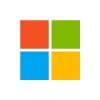Python is a high-level, interpreted programming language known for its simplicity and readability, making it an excellent choice for both beginners and experienced developers. Here’s an overview of what Python is and what it offers:
Key Characteristics of Python
- High-Level Language:
- Python is designed to be easy to read and write, using clear syntax that mirrors human language. This makes it accessible for programmers of all levels.
- Interpreted:
- Python code is executed line-by-line, rather than being compiled into machine code. This allows for quicker development and testing.
- Dynamically Typed:
- Python does not require explicit declaration of data types. Variables can change type at runtime, which simplifies coding but requires careful handling to avoid type-related errors.
- Object-Oriented:
- Python supports object-oriented programming (OOP), allowing you to create and manipulate objects and classes. This facilitates modular and reusable code.
- Extensive Standard Library:
- Python comes with a large standard library that includes modules and functions for various tasks, such as file handling, networking, and data manipulation.
- Cross-Platform:
- Python is available on various operating systems, including Windows, macOS, and Linux, allowing code to be written and executed across different environments.
- Versatile and General-Purpose:
- Python can be used for a wide range of applications, including web development, data analysis, artificial intelligence, scientific computing, automation, and more.
- Community and Ecosystem:
- Python has a vast and active community that contributes to a rich ecosystem of third-party libraries and frameworks, such as Django for web development, Pandas for data analysis, and TensorFlow for machine learning.
Common Uses of Python
- Web Development: Using frameworks like Django, Flask, and FastAPI, Python is widely used to build web applications and services.
- Data Analysis and Visualization: Libraries like Pandas, NumPy, and Matplotlib make Python a powerful tool for data manipulation and visualization.
- Machine Learning and Artificial Intelligence: Python is popular in the AI and machine learning fields due to libraries like TensorFlow, Keras, PyTorch, and Scikit-learn.
- Automation and Scripting: Python is often used for writing scripts to automate repetitive tasks and workflows.
- Scientific Computing: With libraries such as SciPy and SymPy, Python is used in various scientific and engineering applications.
- Game Development: Libraries like Pygame and Panda3D enable game development in Python, though it is less common compared to other languages like C++.
- Education: Python’s simplicity and readability make it a popular choice for teaching programming concepts.
History and Evolution
- Created by Guido van Rossum: Python was conceived in the late 1980s and first released in 1991. Its development was guided by Guido van Rossum, who led the project for many years.
- Python 2.x and 3.x: Python 2.x was widely used but reached its end of life on January 1, 2020. Python 3.x is the current version and is actively maintained with ongoing improvements and updates.
Example of Python Code
Here’s a simple example of Python code that prints “Hello, World!” to the console:
print ("Hello, World!")This code demonstrates Python’s straightforward syntax for performing basic tasks.
Summary
Python is a versatile, user-friendly programming language with a broad range of applications. Its simplicity, readability, and extensive libraries make it a popular choice for various domains, from web development to data science and beyond.



